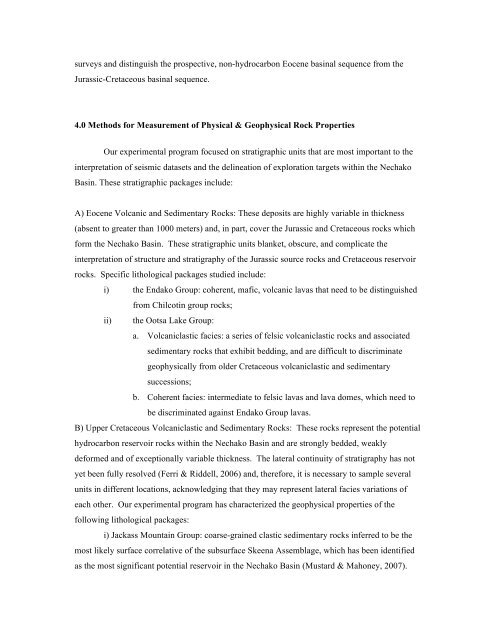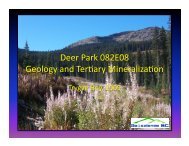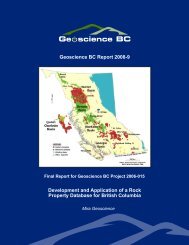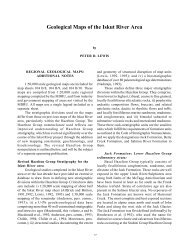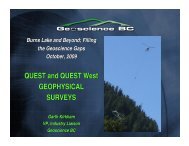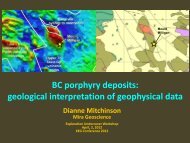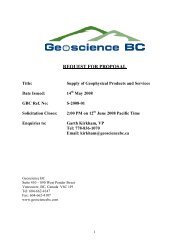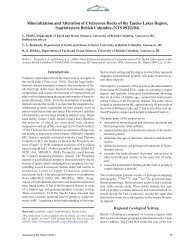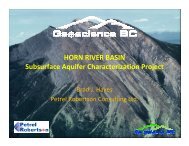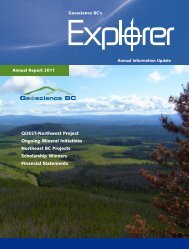Report - Geoscience BC
Report - Geoscience BC
Report - Geoscience BC
Create successful ePaper yourself
Turn your PDF publications into a flip-book with our unique Google optimized e-Paper software.
surveys and distinguish the prospective, non-hydrocarbon Eocene basinal sequence from the<br />
Jurassic-Cretaceous basinal sequence.<br />
4.0 Methods for Measurement of Physical & Geophysical Rock Properties<br />
Our experimental program focused on stratigraphic units that are most important to the<br />
interpretation of seismic datasets and the delineation of exploration targets within the Nechako<br />
Basin. These stratigraphic packages include:<br />
A) Eocene Volcanic and Sedimentary Rocks: These deposits are highly variable in thickness<br />
(absent to greater than 1000 meters) and, in part, cover the Jurassic and Cretaceous rocks which<br />
form the Nechako Basin. These stratigraphic units blanket, obscure, and complicate the<br />
interpretation of structure and stratigraphy of the Jurassic source rocks and Cretaceous reservoir<br />
rocks. Specific lithological packages studied include:<br />
i) the Endako Group: coherent, mafic, volcanic lavas that need to be distinguished<br />
from Chilcotin group rocks;<br />
ii) the Ootsa Lake Group:<br />
a. Volcaniclastic facies: a series of felsic volcaniclastic rocks and associated<br />
sedimentary rocks that exhibit bedding, and are difficult to discriminate<br />
geophysically from older Cretaceous volcaniclastic and sedimentary<br />
successions;<br />
b. Coherent facies: intermediate to felsic lavas and lava domes, which need to<br />
be discriminated against Endako Group lavas.<br />
B) Upper Cretaceous Volcaniclastic and Sedimentary Rocks: These rocks represent the potential<br />
hydrocarbon reservoir rocks within the Nechako Basin and are strongly bedded, weakly<br />
deformed and of exceptionally variable thickness. The lateral continuity of stratigraphy has not<br />
yet been fully resolved (Ferri & Riddell, 2006) and, therefore, it is necessary to sample several<br />
units in different locations, acknowledging that they may represent lateral facies variations of<br />
each other. Our experimental program has characterized the geophysical properties of the<br />
following lithological packages:<br />
i) Jackass Mountain Group: coarse-grained clastic sedimentary rocks inferred to be the<br />
most likely surface correlative of the subsurface Skeena Assemblage, which has been identified<br />
as the most significant potential reservoir in the Nechako Basin (Mustard & Mahoney, 2007).


